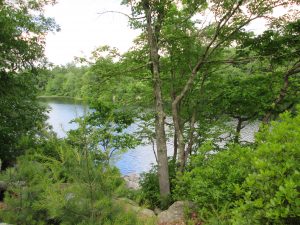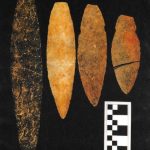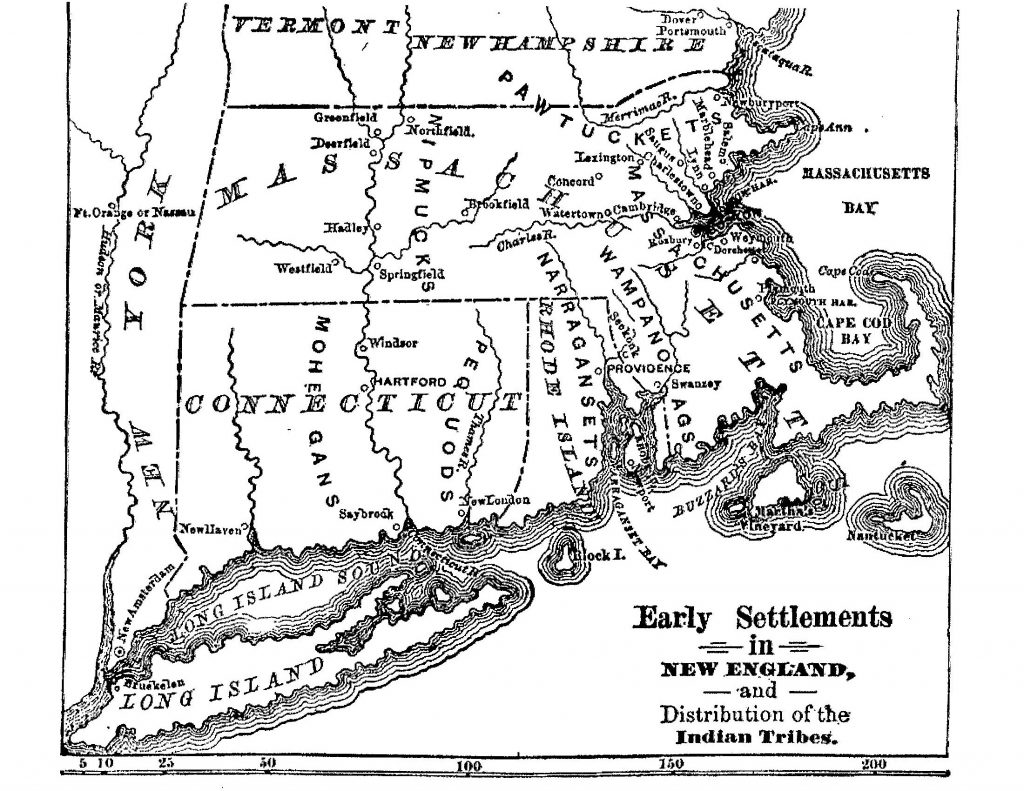

In a time before now, before the arrival European Traders or the English Settlers to the coasts of Massachusetts, The Confederation of Indigenous Massachusett lived and thrived in what is now called the Commonwealth of Massachusetts. For years beyond counting, Indigenous Massachusett Villages spanned from Salem to Plymouth along the coast, and inland as far west as Worcester. The Massachusett People led by their Sac’hems, hunted, fished, worked their quarries, created their tools and sculpted their weapons. They planted vast fields of grain, corn, squash and beans, harvested, prepared and stored their harvests. In their villages they celebrated, practiced their religion, built their homes, raised their families and enjoyed prosperity. One of the Massachusett Tribes was the Neponset and their Sac’hem was Chickataubut, Principal Chief of the Massachusett when the English sailed into Massachusett Territory to settle.
Long before 1620, European Trading Ships traveled throughout New England trading goods with the indigenous tribes of New England.

With them they brought diseases that were deadly to the indigenous people. Plagues traveled throughout the region devastating the tribes and dramatically reducing their numbers. In 1616 Just a few years before the Arrival of the English Settlers, a great plague swept the New England Coast from Maine to Rhode Island, killing nearly eighty per cent of the Indigenous population. The Massachusett Tribes and Villages were greatly affected. Their societies were disrupted, trade threatened and defenses against rival tribes to the north were reduced due to the losses of large numbers of their warriors. Whole villages were wiped out including Pawtuxant (Plymouth). Nanapashemet, Great Sac’hem of the Massachusett People residing at or near Salem, was killed by rival tribesmen during this time. It was a time of great grief among the Massachusett people. Just as the Massachusett Indigenous population began to recover, the English Invasion began. (Between 1620 and 1660, 80,000 English speaking people crossed the Atlantic writes George Horner in Red Indians, White Invaders.)
